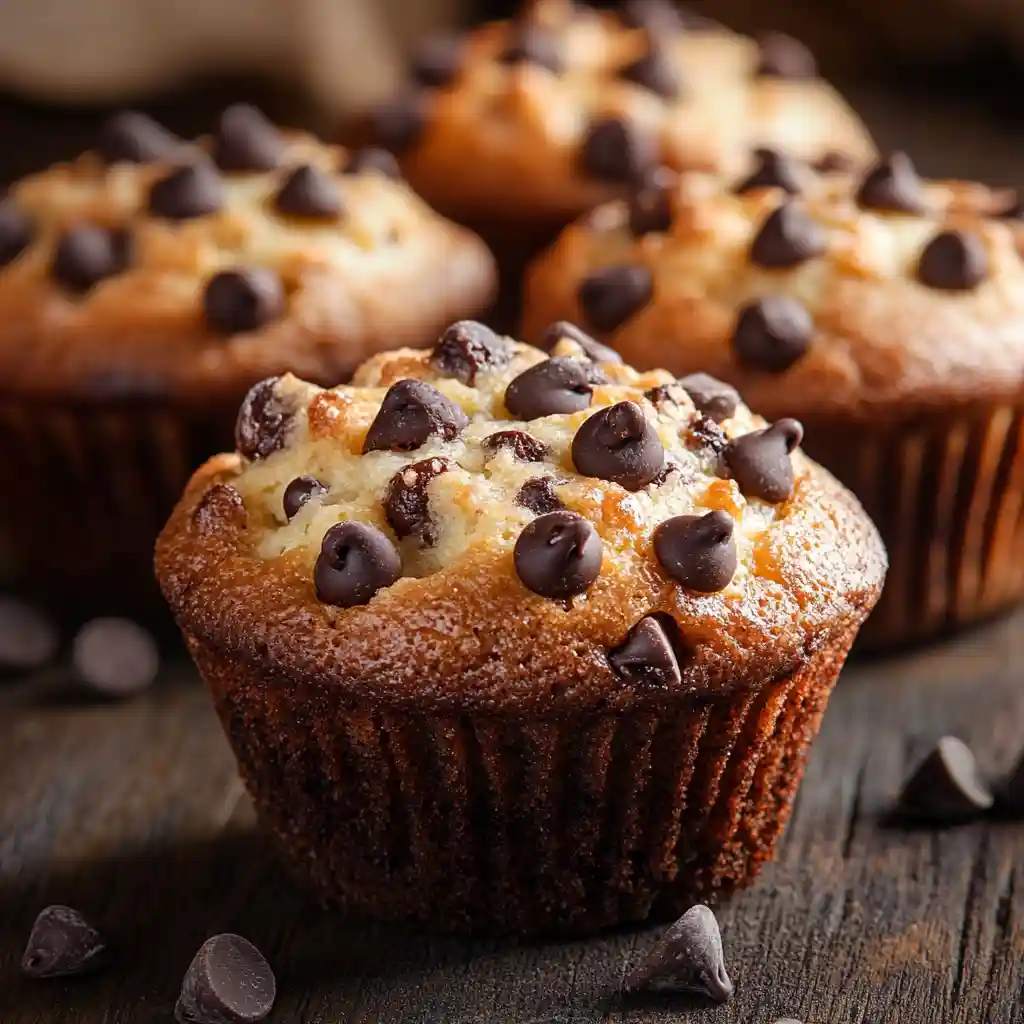If you’ve been craving a snack that’s equal parts delicious and nutritious, cottage cheese protein muffins are about to become your new favorite go-to. These moist, fluffy, and incredibly satisfying muffins pack a serious protein punch without compromising flavor or texture. Whether you’re aiming to fuel up after a workout, prep an easy breakfast, or cut down on refined carbs, these muffins hit the sweet spot.
Loaded with a blend of wholesome ingredients like almond flour, protein powder, and the magic touch of creamy cottage cheese, cottage cheese protein muffins are surprisingly low in sugar but rich in flavor. Plus, they come together in under 30 minutes. Perfect for busy lifestyles and meal preppers alike.
Table of Contents
Why Cottage Cheese Protein Muffins Are Taking Over
The Rise of High-Protein Baking
High-protein baked goods have been popping up in kitchens across the country and for good reason. People are ditching sugar-laden breakfast items in favor of options that offer balanced macros and sustained energy. Muffins made with traditional white flour and refined sugar may taste great, but they tend to cause blood sugar spikes and crashes that leave you hungry soon after. That’s where cottage cheese protein muffins step in.
These muffins flip the script with protein-rich ingredients that nourish your body and keep you full longer. They’re especially popular with fitness lovers, people following low-carb diets, and anyone looking to avoid that mid-morning slump.
But the popularity of protein baking isn’t just a health trend. Thanks to a new wave of food blogs and TikTok recipe creators, high-protein cottage cheese muffins have gone viral for their taste just as much as their nutrition.
Health Benefits of Cottage Cheese in Muffins
Cottage cheese is an underrated superstar in the world of healthy baking. Not only is it high in protein (with up to 14 grams per serving), but it also contains key nutrients like calcium, B12, and selenium. Here’s what makes it especially great for muffins:
| Nutrient | Benefit |
| Casein Protein | Slow-digesting protein keeps you full longer |
| Calcium | Supports bone health |
| Probiotics (in some) | Promotes gut health |
| Low in Carbs | Ideal for low-carb or keto lifestyles |
In baked goods, cottage cheese adds a rich, moist texture, similar to cheesecake, without overpowering the other flavors. When blended into muffin batter, it creates a soft crumb and ensures your muffins don’t dry out in the oven.
These qualities also make cottage cheese a natural partner for protein powder. Rather than using just whey or plant-based powder (which can dry out your batter), cottage cheese brings balance, tenderness, and moisture.

Cottage Cheese + Protein Powder – A Powerful Duo
How Cottage Cheese Protein Muffins Improve Texture and Taste
If you’ve ever tried baking with only protein powder, you might have run into a few problems; dry texture, grainy finish, or an odd aftertaste. Enter: cottage cheese. When combined with protein powder, it transforms the overall muffin experience.
Cottage cheese introduces a rich, creamy element that gives muffins their signature moistness. Its mild flavor blends beautifully into both sweet and savory recipes. In fact, when blended, cottage cheese almost disappears into the batter, leaving behind a light, tender crumb that doesn’t scream “healthy” at all.
Here’s why this combo works so well:
- Moisture booster – Protein powder can be drying, but cottage cheese offsets that with natural creaminess.
- Protein amplifier – Each brings its own complete amino acid profile to the mix.
- Flavor neutralizer – Cottage cheese mutes any bitterness from some plant-based powders.
It’s like baking science but delicious.
Why Protein Powder Alone Isn’t Enough
Yes, protein powder adds macros, but it doesn’t always add magic. On its own, it can cause muffins to turn out dense or rubbery. Plus, different types of protein powders absorb liquid differently, which can alter your final texture or even throw off your baking time.
Here’s a breakdown of how various protein powders stack up in muffins:
| Type | Pros | Cons |
| Whey Protein | Smooth texture, easy to mix | Can over-expand and dry out muffins |
| Pea Protein | Plant-based, dense nutrient profile | Slightly gritty texture |
| Beef Isolate | High protein, low allergen risk | Strong flavor, often needs balancing |
| Casein | Slow-digesting, creamy when baked | Expensive, thick batter |
Using half cottage cheese, half protein powder offers a balanced approach, flavorful, high-protein, and moist. This formula creates the ideal protein muffin and avoids the common baking traps.
For example, Macro Mike’s flavored pea protein or a mild vanilla whey protein both pair wonderfully with cottage cheese. They blend smoothly, add sweetness, and won’t overpower fruit or spice add-ins.
Key Ingredients to Make the Perfect Cottage Cheese Protein Muffins
Best Type of Cottage Cheese to Use (Low-fat vs Full-fat)
Not all cottage cheese is created equal, especially when it comes to baking. The texture, fat content, and dairy type can make a big difference in how your muffins rise and taste.
Low-fat cottage cheese is the go-to option for most recipes. It’s thick enough to bind ingredients but light enough to keep calories and saturated fat low. Brands like Good Culture’s lactose-free cottage cheese are especially popular with those who have dairy sensitivities. They offer the creamy texture of dairy without digestive side effects.
On the other hand, full-fat cottage cheese adds a slightly richer flavor and denser texture. It works well if you want your muffins to feel more indulgent, but keep in mind that it may slightly alter baking time and make the final muffin denser.
| Type | Texture | Best Use |
| Low-fat (2%) | Light, smooth | Balanced baking, macro-friendly snacks |
| Full-fat | Rich, dense | Hearty muffins, dessert-style flavors |
| Lactose-free | Creamy, light | Dairy-sensitive bakers and low FODMAP |
If you’re experimenting, start with low-fat and adjust only if you need a creamier finish.
Top Protein Powders for Baking: Plant-Based vs Whey
When it comes to muffins, the type of protein powder you choose affects more than nutrition, it shapes flavor, density, sweetness, and rise.
Let’s break down the pros and cons of the most popular options:
✅ Plant-Based (Pea, Brown Rice, Hemp)
- Often more fibrous, slightly gritty in texture.
- Works well with fruit-forward muffins (blueberry, banana).
- May need extra sweetener or vanilla for taste balance.
Example: Macro Mike’s Mixed Berry White Chocolate (pea-based) adds flavor and protein in one go.
✅ Whey Protein
- Creamier, lighter texture when baked.
- Can over-expand if too much is added, so always combine with cottage cheese.
- Vanilla or chocolate flavor works best for general muffin recipes.
✅ Beef Isolate or Egg White Protein
- Less common but very high in protein.
- Strong flavor, best masked with cinnamon, chocolate chips, or bananas.
Pro Tip: Always use a flavor you love, because the taste sticks around even after baking.
Step-by-Step Recipe for Cottage Cheese Protein Muffins
Ingredients List with Nutrition Tips
Creating cottage cheese protein muffins from scratch is surprisingly simple. The real magic is in combining clean, macro-balanced ingredients that taste like a treat without the guilt.
Here’s what you’ll need to master your cottage cheese protein muffins:
| Ingredient | Purpose | Health Perk |
| 3 eggs | Binder, structure | Rich in protein and choline |
| ¾ cup low-fat cottage cheese | Moisture, creaminess | 14g protein per ½ cup |
| ⅓ cup melted coconut oil | Healthy fat source | Supports satiety, heart health |
| 1¼ cups almond flour | Low-carb base | Gluten-free and fiber-rich |
| ½ cup protein powder | Protein boost | Choose a flavor you enjoy (pea, whey, etc.) |
| 2 tbsp maple syrup | Subtle sweetness | Natural sugar alternative |
| ¼ cup monk fruit sweetener | Sugar-free sweetener | No glycemic impact, great for diabetics |
| ½ tbsp baking powder | Rise and fluff | Key leavening agent |
| ½ tbsp lemon juice | Activates baking powder | Adds brightness |
| 2 tsp vanilla extract | Flavor enhancer | Warm, aromatic finish |
| ½ tsp sea salt | Balances flavors | Enhances other ingredients |
| Add-ins: berries, choc chips, nuts | Optional textures and flavors | Nutrient boost & taste variety |
Nutrition per muffin (approximate):
- Calories: 190
- Protein: 14g
- Net Carbs: 5g
- Fat: 10g
These muffins are ideal for anyone looking to manage blood sugar, eat high-protein snacks, or follow low-carb or gluten-free lifestyles.
Preparation & Blending Instructions for a Smooth Batter
Follow these simple steps to get bakery-worthy cottage cheese protein muffins every time:
- Preheat your oven to 350°F (175°C) and grease your muffin tin or use silicone liners for easy removal.
- In a blender or food processor, combine:
- Eggs
- Cottage cheese
- Melted and cooled coconut oil
- Almond flour
- Protein powder
- Maple syrup and monk fruit sweetener
- Vanilla, lemon juice, salt, and baking powder
- Eggs
- Blend until smooth, no chunks! This ensures the muffins bake evenly and rise properly.
- Fold in your add-ins (like blueberries, chopped nuts, or dark chocolate chips).
- Divide the batter evenly into the muffin tin. This recipe yields about 8 muffins.
- Bake for 20–25 minutes, checking at the 20-minute mark. The tops should be firm to touch, and a toothpick should come out clean.
- Let cool in the pan for 5 minutes, then transfer to a wire rack.
Pro tip: If you’re using frozen berries, chop them into small bits. Whole ones add excess moisture that can mess up your bake.
Delicious Recipe Variations to Try
One of the best things about cottage cheese protein muffins is how easily you can switch them up. Whether you prefer fruity, chocolatey, or nutty flavors, this base recipe adapts beautifully with just a few tweaks. Let’s explore some flavor-packed variations that elevate your muffins from basic to brilliant.
Chocolate Chip, Blueberry, Banana, and Cinnamon Muffins
These four variations are easy to prepare and perfect for different moods or seasons.
🍫 Chocolate Chip Protein Muffins
- Add ¼ cup of mini dark chocolate chips to the batter.
- Sprinkle a few extra chips on top before baking for a glossy, melted finish.
- Best with vanilla or chocolate-flavored protein powder.
🫐 Blueberry Protein Muffins
- Fold in ½ cup of fresh or chopped frozen blueberries.
- Use a dash of lemon zest for a bright flavor twist.
- Frozen berries should be chopped to avoid extra moisture.
🍌 Banana Protein Muffins
- Slice a ripe banana into thin coins and gently press one slice into each muffin before baking.
- Adds moisture and natural sweetness.
- Works great with cinnamon protein powder or plain pea protein.
🌰 Cinnamon Swirl Muffins
- Add 1 tsp ground cinnamon and ¼ tsp nutmeg to the batter.
- Swirl a mixture of cinnamon and monk fruit sugar on top for a crunchy topping.
| Variation | Main Add-In | Flavor Note |
| Chocolate Chip | Mini chips | Sweet & indulgent |
| Blueberry | Fresh/frozen blueberries | Tart & fruity |
| Banana | Banana slices | Sweet & soft |
| Cinnamon Swirl | Cinnamon sugar blend | Warm & spiced |
These variations don’t just switch up the taste, they add texture, nutrients, and variety to your meal prep rotation.
Low-Carb, Dairy-Free, and Gluten-Free Alternatives
Even if you follow a more restrictive diet, there are still ways to enjoy these cottage cheese protein muffins. Here are a few smart substitutions:
- Nut-Free: Replace almond flour with tiger nut flour (not a nut, safe for allergies).
- Dairy-Free: Try lactose-free cottage cheese. If you’re fully dairy-free, experiment with tofu-based alternatives, but results may vary.
- Egg-Free: Use flax eggs (1 tbsp flaxseed + 2.5 tbsp water per egg), though the texture will be slightly softer.
- No Sugar Added: Skip the maple syrup and rely fully on monk fruit or stevia for sweetness.
These swaps help make the muffins accessible to almost any diet while maintaining their protein-rich structure.
Expert Tips to Get Moist and Fluffy Cottage Cheese Protein Muffins
Baking protein muffins isn’t exactly the same as baking traditional ones. The added density from protein powder, nut flours, and low-sugar ingredients means there’s more room for error. But with the right techniques, you can get that moist, bakery-style texture every single time.
Avoiding Dryness: Blending and Baking Time Secrets
One of the most common complaints with protein muffins? They’re dry. That’s because protein powder absorbs more liquid than standard flour, and overbaking makes the issue worse.
Here’s how to fix that:
✅ Tip 1: Blend the batter until silky-smooth
- Cottage cheese needs to be fully blended to break down any curds.
- This helps create an even, smooth texture.
- Avoid over-blending (30–45 seconds is enough) or you risk a gummy texture.
✅ Tip 2: Don’t overbake
- Check at minute 20 and do the toothpick test.
- Pull them out once the top feels firm and a toothpick comes out with just a few moist crumbs.
- Muffins continue to cook slightly as they cool, so take them out just before they feel “done.”
✅ Tip 3: Use silicone muffin liners
- They prevent sticking without the added oil.
- Plus, they help bake the muffins more evenly.
Add-In Do’s and Don’ts (Especially for Frozen Berries)
Mix-ins like berries, chocolate chips, and nuts make these muffins more exciting, but they need to be handled carefully:
✅ Do:
- Chop frozen berries into tiny pieces to prevent excess water release.
- Coat add-ins like berries or chips with a teaspoon of almond flour to keep them from sinking.
- Fold gently to preserve batter airiness.
❌ Don’t:
- Add whole frozen berries; they release too much moisture and can ruin the bake.
- Overload the batter with more than ½ cup of add-ins.
- Stir aggressively; it will deflate the batter and create a dense muffin.
By following these expert tips, you’ll avoid dry, tough cottage cheese protein muffins and instead enjoy light, fluffy bites packed with flavor and nutrients.
Storage, Reheating, and Meal Prep Ideas
Freshly baked muffins are wonderful, but these cottage cheese protein muffins are just as good (maybe better) after they’ve rested overnight. With the right storage, you can prep a week’s worth of high-protein snacks in a single baking session.
How to Keep Cottage Cheese Protein Muffins Fresh All Week
Cottage cheese protein muffins made with almond flour have a naturally moist texture, but proper storage ensures they stay fresh without getting soggy.
Here’s how to do it right:
Refrigerator Storage:
- Let muffins cool completely on a wire rack.
- Store in an airtight container lined with a paper towel to absorb moisture.
- Keep them in the fridge for up to 5 days.
- Ideal for a grab-and-go breakfast or post-gym snack.
Countertop Storage (short term only):
- If your kitchen is cool and dry, muffins can stay fresh on the counter for up to 2 days.
- Always store in a breathable container (not sealed) to prevent sogginess.
Freezing and Reheating for Busy Mornings
Batch baking? Good idea. These cottage cheese protein muffins freeze beautifully with the right technique:
How to Freeze:
- After muffins cool fully, place them on a baking sheet.
- Freeze uncovered for 1–2 hours (this prevents sticking).
- Transfer to a freezer-safe bag or container.
- Label with the date, they’ll keep for up to 3 months.
Reheating Instructions:
- Microwave: Pop one muffin in for 30–45 seconds.
- Oven: Bake at 325°F for 5–7 minutes for a crisp edge.
- Or just enjoy them cold straight from the fridge, they stay moist and delicious even chilled!
If you’re prepping breakfasts or healthy snacks for the week, simply double the recipe and freeze half. You’ll thank yourself later.
Nutrition Breakdown and Health Benefits
One of the biggest reasons cottage cheese protein muffins are gaining traction is their stellar nutrition profile. Unlike traditional muffins that often spike your blood sugar and crash your energy, these muffins fuel your body with slow-digesting protein, fiber, and healthy fats.
Let’s dig into the macro breakdown and see how they stack up to typical store-bought muffins.
Macronutrient and Calorie Comparison to Regular Muffins
| Nutrient | Traditional Muffin | Cottage Cheese Protein Muffin |
| Calories | ~380 | ~190 |
| Protein | ~4g | 14g |
| Net Carbs | ~40g | 5g |
| Sugar | ~25g | 3–4g (natural/zero-cal) |
| Fat | ~16g (mostly saturated) | 10g (healthy fats) |
| Fiber | ~1g | 3g+ (almond flour, berries) |
Key Takeaway: You’re cutting the sugar and carbs by more than half while tripling your protein intake. That’s a game-changer for those watching their weight, managing diabetes, or simply trying to eat more mindfully.
Bonus: These muffins are made with blood sugar–friendly ingredients like:
- Almond flour – low glycemic and high in fiber
- Monk fruit sweetener – doesn’t raise insulin levels
- Cottage cheese – rich in slow-digesting casein protein
They’re especially ideal for:
- Pre- and post-workout snacks
- Diabetic-friendly meal plans
- Low-carb or keto lifestyles
- Kids’ lunchboxes (with chocolate chip or berry options)
Related High-Protein Recipes to Explore
If you’re into cottage cheese protein muffins, chances are you’re always looking for other high-protein recipes that taste great and nourish your body. Luckily, cottage cheese, oats, protein powder, and almond flour can go beyond muffins. They’re incredibly versatile in healthy baking.
Here are a few delicious, protein-packed ideas to keep the momentum going:
Cottage Cheese Pancakes
Fluffy and packed with protein, these pancakes combine cottage cheese, eggs, and oats. Perfect for a savory-sweet breakfast with sugar-free syrup or fruit compote.
Protein Banana Bread
Sweetened naturally with bananas and powered by protein powder, this loaf makes for an excellent post-workout treat or satisfying snack. Add walnuts or dark chocolate for texture.
Healthy Breakfast Cookies
Using rolled oats, nut butter, and a scoop of protein, these no-flour cookies come together in minutes. Ideal for quick bites and meal prep.
Greek Yogurt Smoothie
Blend Greek yogurt with frozen fruit and a scoop of protein powder for a creamy, refreshing breakfast or midday snack.
Sweet Potato Protein Muffins
A great fall-inspired twist. Use mashed sweet potato, cinnamon, and plant protein for a soft, spiced muffin that’s as comforting as it is energizing.
Conclusion: Bake Your Way to Better Health
If you’ve been on the hunt for a protein-packed, low-carb snack that doesn’t skimp on flavor, these cottage cheese protein muffins are your answer. Moist, fluffy, naturally sweetened, and packed with up to 14 grams of protein per muffin, they’re perfect for meal prep, post-workout fuel, or a healthier breakfast on-the-go.
Whether you keep cottage cheese protein muffins simple or jazz them up with chocolate chips, berries, or banana slices, these muffins are incredibly adaptable, and they actually taste good (unlike some rubbery protein bakes). Thanks to the powerful combo of cottage cheese and protein powder, they deliver on both texture and nutrition.
For more recipes, follow us on Pinterest.

Cottage Cheese Protein Muffins
Ingredients
Method
- Preheat oven to 350°F (175°C) and prepare muffin tin with liners or grease.
- In a blender or food processor, add: Eggs, Cottage cheese, Melted (cooled) coconut oil, Almond flour, Protein powder, Maple syrup + monk fruit sweetener, Vanilla extract, lemon juice, baking powder, and salt
- Blend until completely smooth, no chunks.
- Gently fold in any optional add-ins like berries or nuts.
- Divide batter evenly into 8 muffin slots.
- Bake for 20–25 minutes, checking at 20 min. Tops should be golden and firm.
- Let cool for 5 minutes in the tin, then transfer to a wire rack.
Nutrition
Notes
- Use low-fat cottage cheese for best balance of moisture and texture.
- Whey protein makes lighter muffins, while pea protein adds fiber.
- For frozen berries: chop them small to prevent sogginess.
- These muffins keep well in the fridge for 3–4 days.
Tried this recipe?
Let us know how it was!FAQs About Cottage Cheese Protein Muffins
Can you just add protein powder to muffins?
Yes, but be careful. Adding protein powder without adjusting other ingredients (like moisture or fat) can make muffins dry or dense. That’s why blending it with cottage cheese works so well, it adds moisture and helps maintain a soft texture.
What is the best protein powder for muffins?
It depends on your preference. Plant-based pea protein is great for structure and fiber. Whey protein gives a smoother texture but can over-expand if you use too much. Always choose a flavor you enjoy, vanilla, cinnamon, or chocolate blends well in muffins.
What is the healthiest type of muffin?
The healthiest muffins are low in sugar, high in protein, and made with whole ingredients like almond flour, eggs, and natural sweeteners. Cottage cheese protein muffins check all those boxes and are naturally low-carb and gluten-free.
Can you add protein to baking?
Absolutely. Protein powder is great in muffins, breads, pancakes, and even cookies. The key is balancing it with fats and liquids, like cottage cheese, eggs, or Greek yogurt, to avoid a chalky texture.
Printable Recipe Card
Want just the essential recipe details without scrolling through the article? Get our printable recipe card with just the ingredients and instructions.





8 thoughts on “Cottage Cheese Protein Muffins – The Ultimate Healthy Snack Makeover”